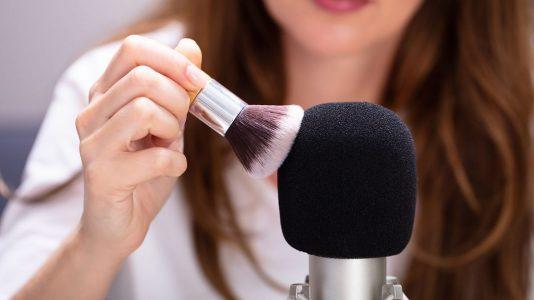Why not everyone likes ASMR - Dispatch Weekly
June 20, 2022 - Reading time: 13 minutes

You may have seen ASMR videos on YouTube – people whispering, tapping their fingers, or rustling paper. These videos are meant to trigger ASMR in viewers, and for many people, they do just that. In this article, we’ll explore what ASMR is, how it works, and whether or not it’s for you.
ASMR has been a youtube global phenomenon for years but not everyone can experience it.
According to Craig Richard a professor of biopharmaceutical sciences at Shenandoah University in Virginia:
“Some people may have different gene sequences that make them more sensitive to oxytocin or other brain chemicals that are involved in ASMR”
“Many individuals have discovered that they had to try many different ASMR triggers before they found the one(s) that work for them”
For instance, not everyone is into the audible stimuli of ASMR. Sounds that make ASMR viewers feel warm and fuzzy like tapping, scratching or mouth noises.
People with misophonia, a sound sensitivity disorder, can’t cope well with certain sounds that can trigger a negative emotional or physiological response.
In a 2022 study, 36 ASMR experiencers and 28 non-experiencers watched an ASMR video and completed assessments of neuroticism, trait anxiety, and pre- / post-video state anxiety.
The results were astonishing, ASMR-experiencers had significantly greater scores for neuroticism, trait anxiety, and video engagement than non-experiencers.
ASMR Brain studies
Researchers have observed brain activity when participants felt tingles and watched ASMR videos. In one MRI study, ten participants had their brains scanned during the experience.
The study showed that moments of ASMR are associated with brain activation and feelings of empathy.
Preliminary results show ASMR may help those who feel more connected to other people. These findings are based on a small sample size, but we can still apply some implications of this comparison to daily routines.
Two other studies have found that people who experience ASMR typically have unusual neural activity – when they are placed in an MRI machine, they show less distinction between networks of different brain function and a lower capacity to regulate their emotional response. The researchers suspect these neurological differences result in less tolerance for sensory stimuli than the average person, which may lead to ASMR.
Disagreements can arise from issues that stem from the way external stimuli affect emotional experiences. There’s not one set way to interpret stimuli, so each person may have a different reaction than others.
The less the limitations that our minds have imposed on themselves, the more intense a positive emotional experience can become.
People who experience ASMR are also more likely to experience other sensory experiences. People with ASMR are also more likely to experience misophonia, which isn’t pleasant.
What does it mean to do ASMR?
ASMR is a physical sensation of euphoria or deep calm, sometimes tingling in the body, triggered through sound, touch, and movement. It’s often been described as a “brain massage”, and can be induced by a variety of stimuli, including whispered voices, gentle touch, and crinkling paper.
Some people use ASMR as a way to relax, while others find it helpful in managing anxiety or insomnia. There’s still much we don’t know about ASMR, but it’s thought to be entirely safe and there are no known negative side effects. Whether you’re new to ASMR or you’ve been experiencing it for years, we hope you’ll enjoy exploring this fascinating phenomenon!
Different triggers for ASMR
ASMR can be triggered through a variety of different stimuli, including sound, touch, and movement. Depending on the individual, some people may be more sensitive to certain triggers than others. Common triggers include soft speaking, whispering, gentle sounds like crinkling paper or raindrops, and light touch.
What triggers ASMR?
There’s no one answer to this question as everyone experiences ASMR differently. However, certain sounds, touches, and movements are more likely to trigger the response. Some people find that soft, gentle sounds like whispering or rain can trigger ASMR, while others prefer more intense stimuli, such as crunching leaves or tapping on a hard surface.
Similarly, some people prefer a light touch, such as having their hair lightly brushed, while others prefer firmer pressure. Ultimately, it’s up to each individual to experiment with different triggers to see what works best for them.
How ASMR can be used
ASMR can be used to relax and de-stress. It can be used to unwind after a long day or to help you sleep. ASMR can also be used as a tool to focus and boost your productivity.
There are many different ways to experience ASMR. Some people find it helpful to listen to ASMR videos or audio recordings. Others find it helpful to engage in ASMR activities such as massage, hair brushing, or crinkle sounds.
If you’re new to ASMR, it’s important to experiment and find what works for you. Everyone’s experience of ASMR is unique, so what works for one person may not work for another.
There are many benefits of ASMR, so give it a try! You may be surprised at how much it can help you relax and de-stress.
Physical sensations associated with ASMR
ASMR is a relatively new phenomenon, and as such, there is still a lot of research to be done to understand all of the different physical sensations that are associated with it. However, what we do know is that many people who experience ASMR report feeling a sense of deep calm or euphoria, as well as a tingling sensation in their bodies.
Many different triggers can cause ASMR sensations, but most commonly they are related to sound, touch, and movement. For example, someone might experience ASMR when they listen to soft-spoken words, receive a gentle massage, or watch someone perform a soothing task such as crinkling paper.
If you think you may have experienced ASMR before, pay attention to your body the next time you come across one of your triggers. Do you notice any changes in your breathing or heart rate? Do you feel a tingling sensation in your scalp or down your spine? These are just some of the physical sensations that have been associated with ASMR.
ASMR and mental health
ASMR has been shown to have positive effects on mental health. A study conducted in 2019 showed that people who regularly watch ASMR videos report lower levels of anxiety and stress. They also report higher levels of self-esteem and self-compassion.
Another study found that people who experience ASMR show reduced levels of anxiety and depression. ASMR has also been found to help people with insomnia.
So if you’re looking for a way to reduce stress and anxiety, or improve your sleep, give ASMR a try. There are plenty of videos to choose from on YouTube and other platforms. Just make sure to find one that works for you.
Why is ASMR so popular?
ASMR content induces a feeling of euphoria and many people believe that their anxiety is alleviated the moment they watch. What induces this sensation? It is understood that people who watch ASMR videos exhibit physiological changes such as a decreased heart rate which explains the sense of relaxation.
Link between ADHD and ASMR
The mechanism of ASMR is not yet known, but there are increased levels of activation in areas related to social engagement. It also has a social nature and often shares the release of oxytocin, which is why people report experiencing tingles.
In a study examining the default mode network concerning ASMR, it was observed that people who experienced ASMR had decreased functional connectivity in the default mode network. This pattern matches that seen in children with ADHD. This may be because these individuals have trouble inhibiting sensory-emotional experiences. It might be useful to examine whether pupils dilate differently when confronted with ASMR stimuli.
ASMR on Youtube
The phenomenon initially gained traction in 2010 and snowballed into a trend that is now safeguarded by its corner of the internet, where it is lapped up by fans of the sedative technique worldwide.
YouTube partners are paid $7 CPM, or payment per thousand views- the more views you have, the better your payout is. Known as ‘ASMRtists’ would typically earn about this rate based on ad revenue-sharing for YouTube.
Gentle Whispering ASMR (1.76 million subscribers)
As one of the original ASMRtists, Maria “Gentle Whispering” Viktorovna is a Russian practitioner who has made herself known in the industry through her sleep aid videos. By playing different roles from a masseuse to a librarian in her videos, Viktorovna changes the pace of each video so that no two are similar.
ASMR PPOMO (1.93 million subscribers)
Korean ASMRtist PPOMO started her YouTube channel originally posting gaming content, but now purely produces ASMR videos. Her most popular video involves scalp massages and hair brushing.
Gibi ASMR (2.26 million subscribers)
Gibi ASMR is a successful ASMR artist with 2 million subscribers, who sits at the top of the list. She found success within an industry as someone who absorbed content in order to alleviate her sleep issues, before deciding to make her own videos on YouTube and Twitch.
ASMR Darling (2.42 million subscribers)
Taylor Darling started ASMRing in 2014. She specializes in sleep-related ASMR (such as whispering, tapping and scratching) which is achieved by various noises.
Having developed a following on YouTube, Taylor decided to expand her horizons in 2016 by showcasing her other hobbies through vlogging and gaming on her second channel.
SAS-ASMR (7.84 million subscribers)
SAS-ASMR is a YouTube channel dedicated to ASMR (Autonomous Sensory Meridian Response). The channel has over 7 million subscribers and over 2000 videos.
The videos on SAS-ASMR typically feature someone performing ASMR triggers on themselves or another person. The most common ASMR triggers are sounds, such as crinkling, tapping, and whispering. Other popular triggers include soft touch and gentle movement.
SAS-ASMR videos are designed to give viewers a relaxing and euphoric experience. Many people use the videos to help them fall asleep or to cope with anxiety and stress.
Sounds Too Good to Be True?
ASMR is a physical sensation triggered by sound, touch, and movement that can create feelings of euphoria or deep calm. Some people find ASMR to help manage stress and anxiety, while others enjoy the sensation for its own sake. If you think you might benefit from ASMR, there are a variety of resources available online to get started. Give it a try and see if it works for you!

DW Staff
David Lintott is the Editor-in-Chief, leading our team of talented freelance journalists. He specializes in covering culture, sport, and society. Originally from the decaying seaside town of Eastbourne, he attributes his insightful world-weariness to his roots in this unique setting.




